


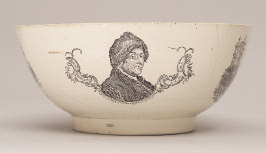 Did Benjamin Franklin invent transferware? by Wendy W. Erich
Did Benjamin Franklin invent transferware? by Wendy W. Erich
ON 3RD NOVEMBER 1773 Benjamin Franklin (1706–90) wrote a letter to Peter Perez Burdett, a young engraver then based in Liverpool, thanking him for sending his recently produced specimen of transfer-printed chinaware. Following words of appreciation and encouragement for the china, the elder statesman then makes an astonishing claim that he himself had pursued his idea for transferring pictures to pottery more than twenty years earlier, only to be laughed at by the English pottery trade. The invention of transferware pottery has been subject to academic dispute, but credit was ultimately bestowed on John Brooks as the creator and John Sadler, of Sadler & Green, Liverpool,as the developer of the transfer-printed style that revolutionised the surface decoration of ceramics for the following two hundred years. However, the importance to ceramic history of this 1773 letter written by Franklin has been overlooked. Read this article.
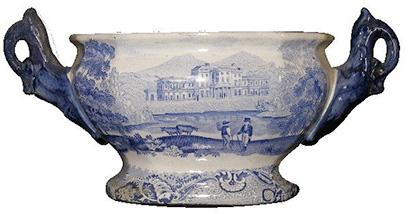 Database Discoveries #11 - Don’t Believe Everything You Read on that Plate by Len Kling
Database Discoveries #11 - Don’t Believe Everything You Read on that Plate by Len Kling
It's a painful thing to have to admit, because we all love our dishes and want to be able to trust them. However, the plain truth is that for almost two centuries, some of them have been deceiving their owners. We read the pattern marks and naturally take it for granted that what is printed there is accurate, but alas, that's not always the case. Perhaps some would think this is not an issue of the greatest importance, for just as a rose by any other name would smell as sweet, so a mismarked pattern is just as pleasing to the eye. Still, lest we forget that Staffordshire potters were not always above a bit of gentle skullduggery, here we look at some examples from the database that are in fact "ringers" inserted into series of views bearing a place name. When marked, it is with the series name, but they aren't identified individually. Read this article.
Rich with content for ceramic collectors, researchers, authors, curators, and historic archaeologists, the sites are sure to deliver value for their visitors. The exhibition’s curators continue to enhance them and, now, with site application upgrades, including a new magnification feature and upgraded content management capabilities, the TCC and its collaborators are pleased to relaunch these exhibits, all free to a worldwide audience.
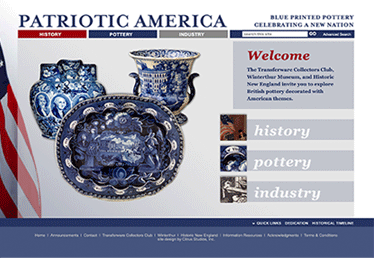
Branded Patriotic America, debuted in 2014 in collaboration with Historic New England, and the Winterthur Museum
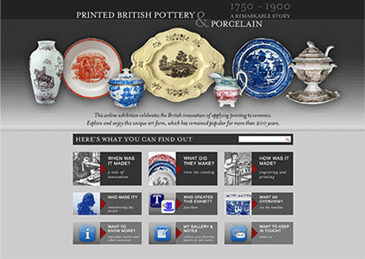
Launched in 2015 in partnership with the Northern Ceramic Society.
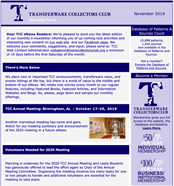 Not a member but want to receive email updates?
Not a member but want to receive email updates?